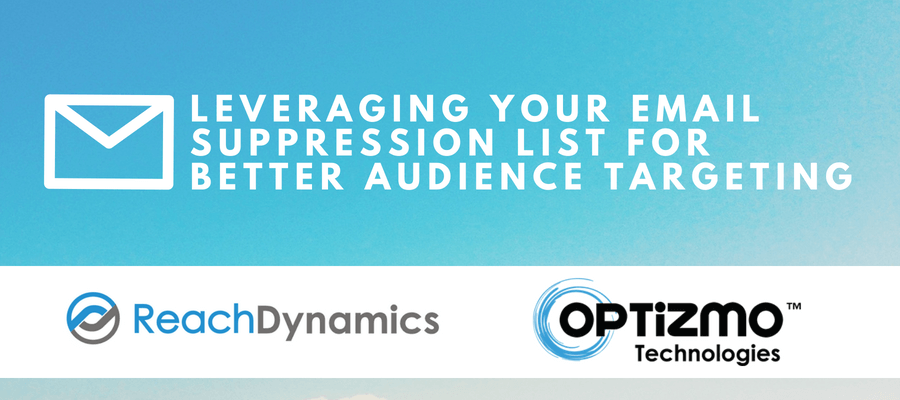 There have been times during the 40 year history of email marketing when a lot of marketers took a spray-and-pray approach to their campaigns – emailing large groups of people, targeted or not – hoping to connect with the right prospects in the process. Email campaigns were (and still are) inexpensive to send, in most cases, and the incremental cost of adding one more or even thousands more addresses to your list wasn’t significant. Largely due to this cost structure, some marketers focused on a ‘more is better’ approach to campaign planning. After all, the more emails you send, the more responses you generate, and the more sales you drive. Seems pretty simple, right?
There have been times during the 40 year history of email marketing when a lot of marketers took a spray-and-pray approach to their campaigns – emailing large groups of people, targeted or not – hoping to connect with the right prospects in the process. Email campaigns were (and still are) inexpensive to send, in most cases, and the incremental cost of adding one more or even thousands more addresses to your list wasn’t significant. Largely due to this cost structure, some marketers focused on a ‘more is better’ approach to campaign planning. After all, the more emails you send, the more responses you generate, and the more sales you drive. Seems pretty simple, right?
But, email marketing was also built on the lessons of the traditional direct marketing industry. Offline direct marketers learned that one of the best ways to drive ROI from direct mail campaigns was through the use of audience targeting and segmentation. When every additional message being sent (a catalog or other printed material) carries a per-piece cost for printing and postage, sending the right content to the right recipient is vital to drive positive ROI.
It didn’t take long for email marketers to begin using advanced audience targeting and list segmentation strategies to optimize campaign performance and move beyond a simple ‘send more, earn more’ mindset. Over the years, marketers have developed advanced targeting tactics, based on a wide variety of data points to deliver highly personalized and relevant content to recipients. Whether it is purchase history, website browsing activity, or other types of behavioral data, marketers have used this wealth of information, along with advanced database analysis tools, to enhance performance – turning audience targeting into a science.
So, you might think there isn’t much left to talk about from an audience targeting standpoint. However, there is one side of the targeting equation that often gets overlooked from a strategic standpoint – suppression files.
When it comes to suppression lists, many companies think they start and stop with the well-known and vitally important opt-out or unsubscribe file. If you are using email marketing in almost any region of the world, you are required to provide recipients with a way to unsubscribe (or Opt-Out) from receiving future email messages. To stay compliant with CAN-SPAM compliance and other regulations, you need to honor those requests, following a time period for processing (which varies by country) and suppress those email addresses from future mailings. For many marketers, this opt-out process and the suppression of those addresses from their mailing lists happens behind the scenes, handled by their email platform automatically. This means that the process is taken care of without the marketer giving it much thought. So, in some cases, marketers really only think about their suppression list if they see their opt-out rate change from one campaign to the next.
However, there is a lot more to be gained by looking at suppression lists more strategically and not simply as a means of complying with CAN-SPAM and other email regulations. Many creative marketers use suppression files as a part of their overall audience targeting strategy. There are numerous instances where de-targeting or negatively targeting an audience segment from a larger list may be a much more effectively implemented using a suppression strategy, rather than a positive targeting approach.
Here are a few examples of suppression list strategies that different companies use today as a part of their audience targeting processes.
Current Customers
It’s a fairly common philosophy in business that a company’s greatest asset is its customer list. This certainly holds true in email, where marketing to current customers is typically more cost-effective than acquiring new customers. At the same time, companies know that you have to bring in a steady stream of new customers to replace those that cancel a subscription or never make another purchase.
Email has a long history as an effective tool for customer acquisition, whether a company acquires a prospect list or engages with third parties (like performance agencies, affiliate networks, and affiliates) to deliver email campaigns. But, using email for customer acquisition brings up an immediate challenge. Most advertisers would prefer to suppress current customers from their acquisition marketing campaigns.
Acquisition campaigns often include an offer that is more aggressive than those available to current customers. Advertisers would typically prefer that current customers never see these new customer offers because they either don’t qualify for them (like introductory offers from cable TV providers) or because the margins are lower (50% off on your first order!) and current customers are already more likely to make another purchase or renew a subscription without resorting to massive discount offers. In the case of an affiliate marketing program, the company may be paying their affiliate email marketers for every new customer or new order they generate. If the goal is for affiliates to drive new customers, then advertisers don’t want them marketing to any current customers, if they can help it.
This is where suppression list management can play a key role in acquisition email marketing. A file of all current customer emails can easily be used as a suppression file in every acquisition campaign. It can be used on internally managed campaigns and advertisers can also require external agencies or affiliates to cleanse their email lists against it before mailing. This helps keep acquisition campaigns focused on prospects rather than customers. This is one of the most popular uses of suppression files to optimize campaign performance, but many companies don’t take advantage of this tactic.
High Frequency Non-Responders
Over a long enough period of time, retention and acquisition email campaigns will include the same recipients in multiple campaigns. At some point – typically some number of contacts or a time period with no response – campaign analytics may determine that it isn’t cost effective to continue mailing a recipient, since they are highly unlikely to respond to further marketing. In these cases, advertisers can build a list of the non-responders and suppress them from future mailings – internal mailings or those driven by affiliates or other outside mailers.
Removing this particular group of low value prospects may also deliver other campaign benefits. Mailing to a large number of non-responsive email addresses over time can have negative impacts on overall deliverability and sender reputation with different email platforms. Removing these records from future mailings provides a cleaner list of more potentially responsive recipients. While email is a very cost-effective marketing channel, there are still higher costs to mail larger lists. The incremental cost of adding one more address to an email campaign may be completely negligible, but once that number reaches thousands, tens of thousands or more, that cost becomes more of a factor.
Any Past Recipients
Advertisers using email for acquisition might want to truly focus on recipients who have not been exposed to their marketing campaigns in the past. This would vary from a current customer list or something like a high volume, non-responder list, but might include records that would appear on those files, as well. In this case, a separate suppression file could be created to include every email address that has been mailed to in prior campaigns over a certain time period. This might also be dialed in more specifically to include recipients of a certain offer or type of offer, or possibly any recipient from the last 12 months, etc.
This approach provides a higher level of control over campaigns designed to reach net-new prospects, such as the ability to create offers designed specifically for this audience.
These are just a few ways in which suppression files can be used to optimize campaign performance. However, there are any number of other strategies and tactics that can be employed – limited only by the audience data a company has at its disposal.
 About the Author
About the Author
Tom Wozniak is the head of marketing for OPTIZMO Technologies, the industry leader in email suppression list management. Tom has been involved in email and digital marketing since before 2000, helping build some of the seminal companies in ad tech and database marketing.
